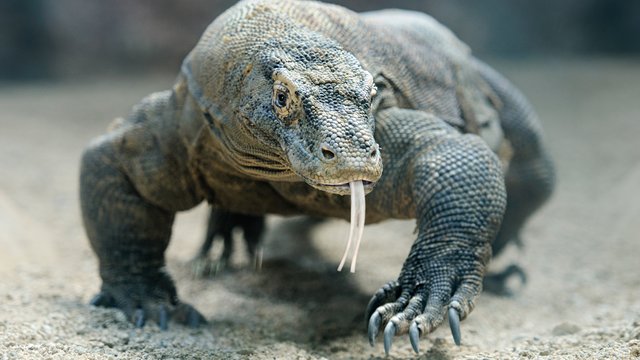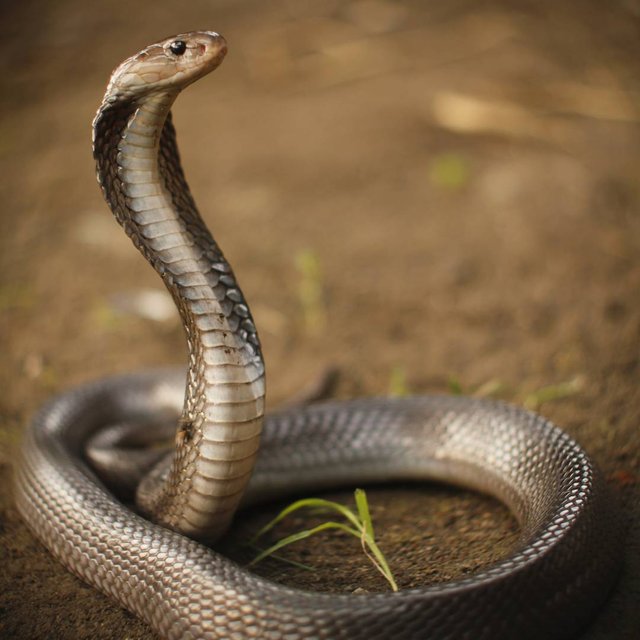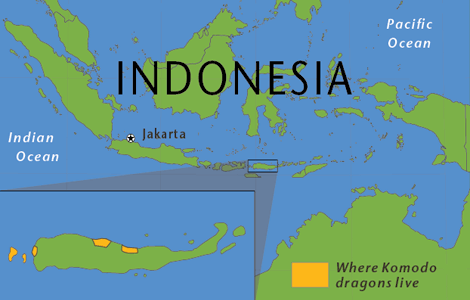The Komodo Dragon's Evolutionary Biography

Varations Within a Species
Genetic mutation is one of the key roles in natural selection and evolution. One adaptation that varies between komodo dragons is the amount of venom they could eject into each bite. This strategy is primarily used to take down bigger prey like water buffalo by injecting venom that lowers blood pressure. The few dragons that don’t have enough venom to weaken their pray would be less likely to kill their prey and more likely to die without passing on their genes. Overtime the gene for an immense amount venom in their lower jaw would increase in the population until every individual in the species had this gene. This is a precise example of Darwin’s Second Postulate that articulates that variation is inhibited. As one of the five postulates of Natural Selection, variation also known as genetic variation can arise from accidents caused to the DNA in the Meiosis or Mitosis stages of cell development. Chromosomal mutations can be harmful, neutral, or beneficial but beneficial mutation or adaptations cause natural selection.
Adaptations to the Enviourment
Biome: Tropical Rainforest, Tropical Savana
Temperture: 90˚F-95˚ F
Percipitation: 800mm-1000mm
Having very acute needs for their environment the Komodo dragon is only found on five islands in southeast Indonesia. These islands are the island of Komodo, Rinca, Flores, Gili Motang, and Padar. What all this islands have in common are that these islands endure arid temperatures that can reach up to 95˚F with 70% humanity in the dry season. Often going 8 months without rain, islands that inhabit Varanus komodoensis are mainly both forest and savanna grasslands. With the vicinity being mostly rugged and hilly most komodo dragons burrow underground to seek shelter from heat. These island also supports a lush ecosystem that shelters Timor deer which are the main food source of this apex predator.
Beneficial Adaptaions
Adaption Description
Sharp Claws-Helps keep prey from escaping from the initial attack. Also used to help kill the prey along with the Komodo’s bite.
Strong Jaw-inhibits its target from escaping, and allows the Komodo to kill its prey with a single bite.
Razor Sharp Teeth-Helps pierce the tough outer layer of skin
Highted Sense of Smell-Allows the Komodo Dragon to smell potential food up to 2.5 miles away.
Dark Tan Coloration-Helps the dragon camouflage in the tall grass
Venom Glands-Helps weaken larger animals
Size-Helps overpower smaller prey

Harmful Adaptaions
Adaptation Describtion
Cannibalism-The consumption of younger Komodo Dragon by older Komodo dragon decrease the population
Legs-Short legs cause a slow top speed of 15 which is three times less then there main prey the Timor deer.
Size-Allows humans to be able to spot them more easily(Humans are there only predator)
Endurance-Since Komodo dragons can way up to 250lb they could only run in short sprints allowing any fast prey to be able to escape.
Poor Night Vision-Poor night vision leads to the inefficient hunting nocturnal game
Survival of the Fitest
According to natural selection the most suited organism to environment will likely survive and reproduce. In other words if an organism’s adaptation is harmful they would likely die off and not pass on that trait to the next generation. Take komodo dragons for example, let’s say that in a population 5% of the komodo dragons have deformed Jacobson’s organs. In a normal komodo dragon this organ is responsible for capturing scent molecules that can locate food up to 2.5 miles away, but these 5% of dragons can only gather scent molecules from up to one mile away. Because of the competition between all of the komodo dragons the 95% end up eating all the available prey in a mile. Because of the absence of food those Komodo dragon with deformed Jacobson organs will be less likely to survive. On the other had well adapted individuals who thrive in the environment will collect the most food and attract the most mates. These beneficial adaptations will be passed down through generation until every member of the population has the beneficial trait.
Convergent Natural Selection
Javan Spitting Cobra
Naja sputatrix

Trait that they have in common with the Komodo Dragon Explination
Jaconson’s Organ-allow both organisms to be able to sense potential prey
Venom- is used in both organism to weaken/kill prey
Tanish-brown coloration-Allows both species to camouflage with the terrain of southeast Indonesia.
Cold bloodiness-The temperature of Southeast Indonesia is mostly at a constant high which keeps both organisms in homeostasis.
Water resistant scales-Allows both organism to swim to island to island for more food.
Why are they common?
The environment is the cause of both these species being similar. The process of natural selection states that members of species who have variation that help them survive in their environment will survive and reproduce. In other words the environment dictates natural selection not the animal itself. Going back to Komodo dragons and cobras the best way to kill their target is with the use of venom. So eventually through evolution both species developed the same trait.
The Komodo Dragon's Evolutionary Biography

How Natural selection works.
In every organism natural selection works in a chronological series of steps where a population starts off with a neutral adaptation and through generations they will adapt a beneficial one. First an individual is born with a genetic mutation that is beneficial to its survival. Second completion for resources ensures the death of organisms with harmful adaptations. Third individuals with a beneficial adaptation will survive and pass on their adaptation. Finally, overtime the beneficial trait will be present in the whole population. In the komodo dragon natural selection took place gave the Komodo dragon the gens for venom, water-resistant skin, and an enhanced Jacobson’s organ.
Works Cited
Animals, A-Z. "Komodo Dragon." A-Z Animals - Animal Facts, Pictures and Resources. N.p., n.d. Web. 07 May 2017.
Wade, Nicholas. "Gene Study Finds Cannibal Pattern." The New York Times. The New York Times, 10 Apr. 2003. Web. 07 May 2017.

Both a beautiful and scary animal.